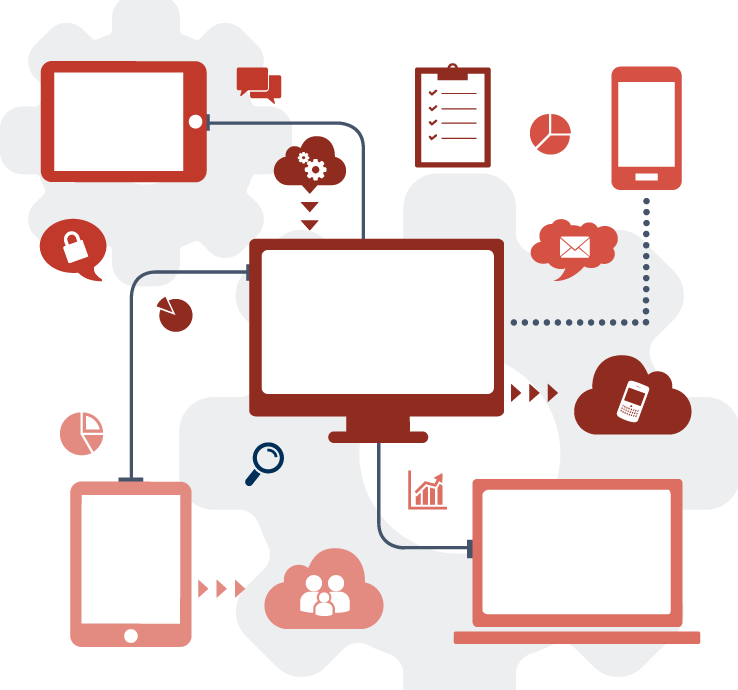Artificial intelligence is everywhere. At the point of publishing this article, AI seems to be present in almost every industry – from the arts to manufacturing. Because of AI’s capacity to generate text and images, as well as its power to efficiently automate and analyze systems such as performance tracking, it has become a companion for many when it comes to executive and personal branding.
Simply put, artificial intelligence, when deployed strategically, offers unique opportunities for executives to enhance their public persona, streamline their digital presence, and engage with their audience.
However, while there are many benefits to using AI, there are some drawbacks that you should consider. In this piece, we will delve into a few pros and cons of deploying AI applications for your personal branding, particularly its impact on content creation, visuals, and storytelling.
AI in Content Creation

When it comes to elements of content creation like copywriting and editing, AI can act as an accelerator and optimizer. AI programs like ChatGPT can help generate, edit, and curate content for your branding to enhance consistency, relevance, and engagement across the various platforms you use.
Pro: A big advantage AI tools have is they can analyze vast amounts of data to understand what type of content resonates most with your audience. This analysis, coupled with AI’s efficiency at automating processes, can go a long way in helping you publish highly targeted and relevant content to drive your engagement numbers and ultimately enhance your online presence.
Con: While using AI to create content can be efficient, convenient, and cost-effective, it usually lacks the depth, nuance, and personal touch that human-created content has. AI can miss the subtleties of language and context that make content relatable, authentic, and engaging. This means that your content can take on a generic flavor that diminishes your brand narrative, potentially alienating your audience who expect authenticity from your content.
AI and Visual Content

AI has become quite popular (and sometimes controversial) in art. People all over the world, regardless of whether they have any artistic inclination, can now create virtual masterpieces in mere seconds. This can certainly come in handy for generating and editing photos, designs, and videos for your social media accounts without having an arsenal of photographers, videographers, and designers on retainer.
Pro: AI design tools like Midjourney can be great for generating high-quality visuals quickly and at relatively low costs (depending on whether or not you need subscriptions to access the tools). These tools are a convenient way to create personalized visual content that both aligns with your brand identity and appeals to your online audience. When used alongside an AI analysis tool, it can also optimize your visual content by examining user engagement data to determine which types of visuals are the most effective for your brand.
Con: While they can be impressive, a glaring drawback of AI-generated visuals is that they lack originality and creativity. This is because AI generates content based on what already exists. Reliance on algorithms can also make visuals that feel derivative and contrived. lacking the unique touch that comes from human creativity. AI-generated visuals have often been reported to lack human nuance which could lead to missing the mark when it comes to capturing your personality and making an authentic connection with your audience.
Another downside is the potential for over-saturation and lack of differentiation. In other words, as more people use the same AI tools to create images and visuals there is a risk that their content will begin to look the same. This can make it hard for your brand to stand out in a crowded digital landscape and can reduce the overall impact of your visual strategy.
AI in Brand Storytelling

A good executive brand needs a compelling story at the heart of it. This is your story that branches out to every part of your brand, from the information you share to how you interact with your audience and everything in between. AI can help you create and curate a compelling brand story to enhance your narrative.
Pro: AI analytics tools can analyze audience preferences and behaviors to create personalized content ideas that align with your values and resonate with your chosen audience. It can identify trending topics and incorporate them into your brand narrative to keep your content timely and relevant.
Con: Despite its analytical capacity, AI may struggle with the emotional and cultural nuances that make storytelling powerful and memorable. The lack of a human perspective can lead to stories that feel detached from real-life experiences, which can in turn diminish your emotional connection with your audience, a vital element for building a strong and authentic personal brand.
Another concerning drawback is that AI-generated stories might lack the spontaneous nature and adaptability that humans possess. For instance, you may find the need to pivot your narrative quickly in response to an unforeseen event or change in your industry. This is something AI might not handle as effectively as people because it may not have the right information to draw data from. This rigidity can lead to missed opportunities to connect with the audience in a timely and relevant manner.
Moreover, relying too much on AI for storytelling can lead to ethical concerns about transparency and authenticity.
The more AI permeates the collective zeitgeist of technology and creation, the more people learn to recognize when a story or picture lacks genuine human input. Simply put, if your brand relies heavily on AI-generated content without disclosure, it could lead to a break in trust among your audience, which can badly damage your credibility in online spaces. Here’s more on how to avoid common pitfalls in your personal branding.
In a nutshell, Artificial Intelligence can be a powerful tool to optimize your executive branding, particularly in the areas of copy and visual content generation, analytics, and storytelling. It has massive advantages in offering a boost in efficiency, data-driven insights, and scalability, but it’s important to be aware of its drawbacks. It falls short in areas that need human creativity, emotional intelligence, and nuanced understanding. To build a truly compelling and authentic executive brand, you need to find a balance between using AI and incorporating a human touch by integrating your personal insights and genuine interaction with your chosen audience. This approach will allow you to shine in different digital spaces through an executive brand that is vibrant, engaging, and personal.





